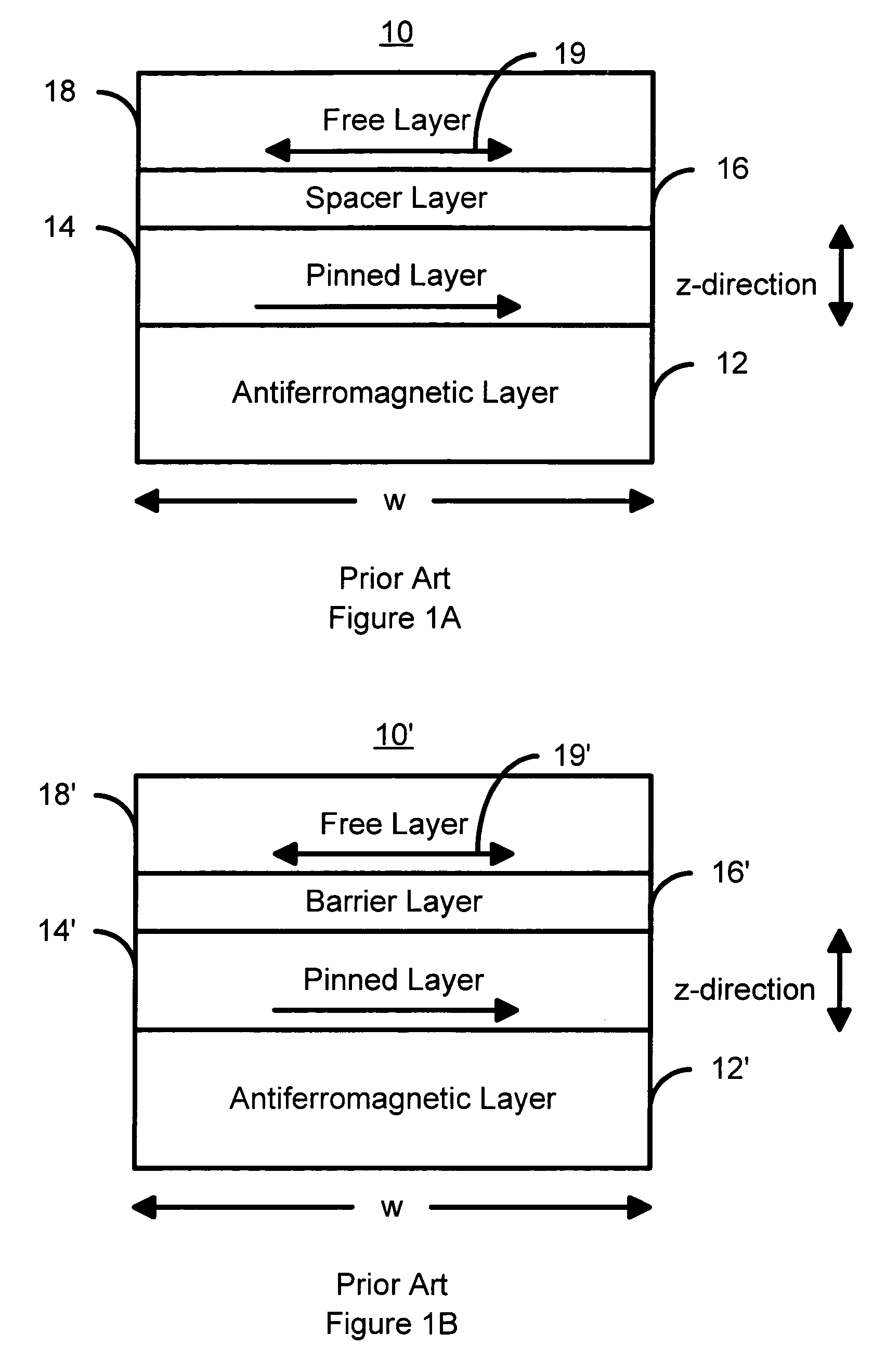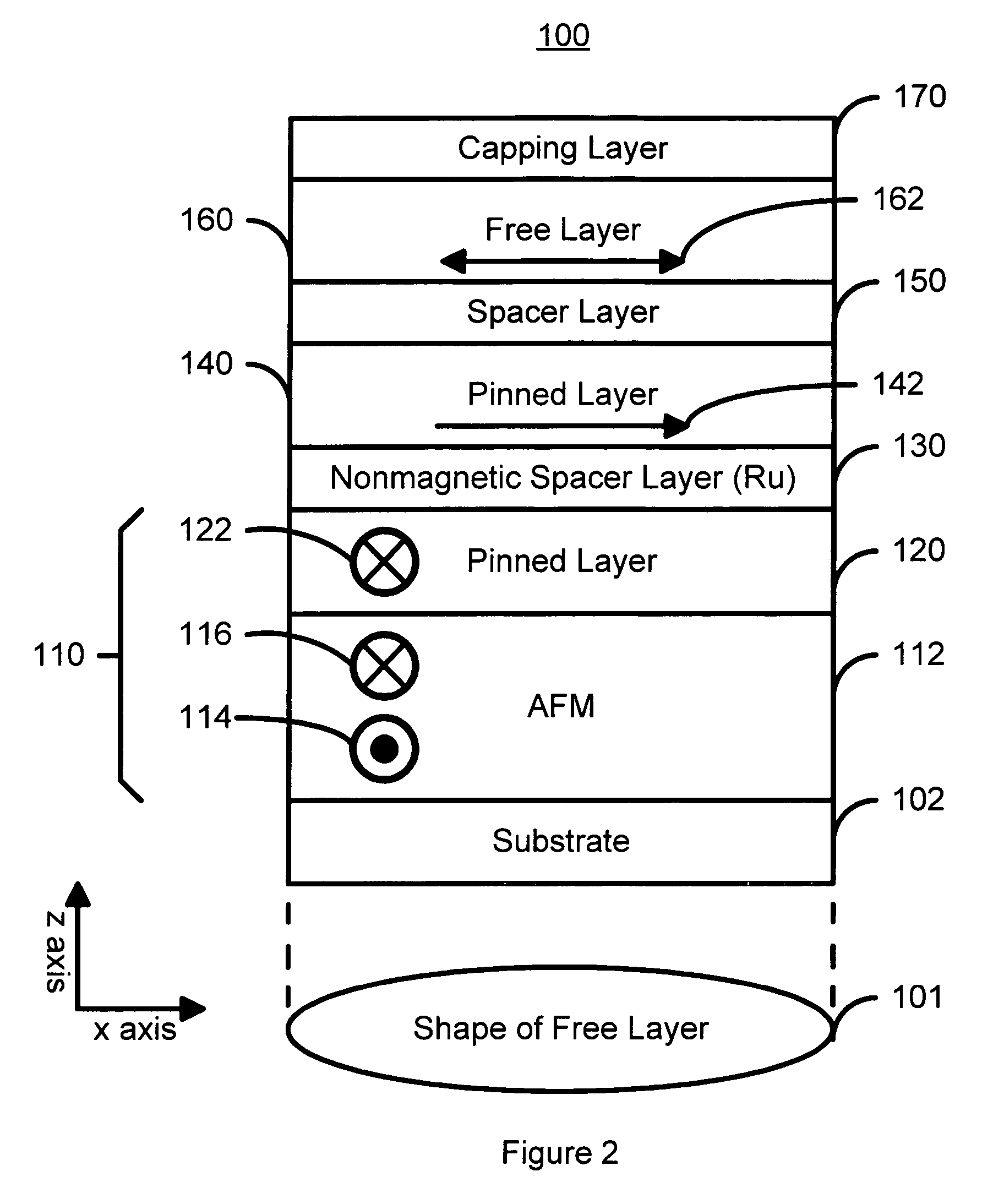Magnetic elements having a bias field and magnetic memory devices using the magnetic elements
a magnetic element and bias field technology, applied in the field of magnetic memory systems, can solve the problems of poor write selectivity, memory cells, and high write current required to write to the conventional magnetic elements, and achieve the effect of improving switching characteristics and reducing curren
- Summary
- Abstract
- Description
- Claims
- Application Information
AI Technical Summary
Benefits of technology
Problems solved by technology
Method used
Image
Examples
Embodiment Construction
[0028] The present invention relates to magnetic elements and magnetic memories such as MRAM. The following description is presented to enable one of ordinary skill in the art to make and use the invention and is provided in the context of a patent application and its requirements. Various modifications to the preferred embodiments and the generic principles and features described herein will be readily apparent to those skilled in the art. Thus, the present invention is not intended to be limited to the embodiments shown, but is to be accorded the widest scope consistent with the principles and features described herein. The present invention is also described in the context of current knowledge for physical phenomenon. However, the present invention is not intended to be limited to specific explanations of physical phenomenon.
[0029] The present invention provides a method and system for providing a magnetic element. The method and system comprise providing a magnetic biasing stru...
PUM
 Login to View More
Login to View More Abstract
Description
Claims
Application Information
 Login to View More
Login to View More - R&D
- Intellectual Property
- Life Sciences
- Materials
- Tech Scout
- Unparalleled Data Quality
- Higher Quality Content
- 60% Fewer Hallucinations
Browse by: Latest US Patents, China's latest patents, Technical Efficacy Thesaurus, Application Domain, Technology Topic, Popular Technical Reports.
© 2025 PatSnap. All rights reserved.Legal|Privacy policy|Modern Slavery Act Transparency Statement|Sitemap|About US| Contact US: help@patsnap.com



